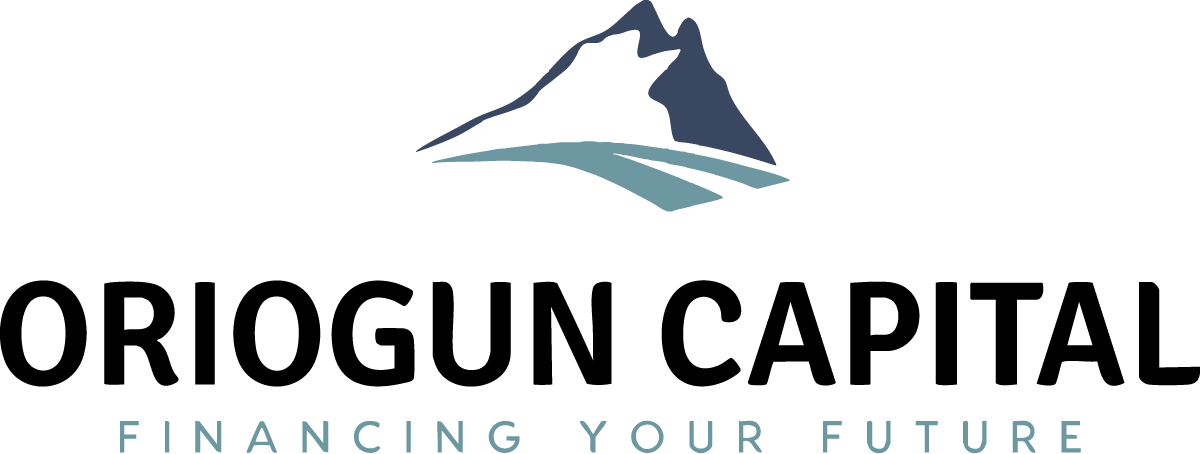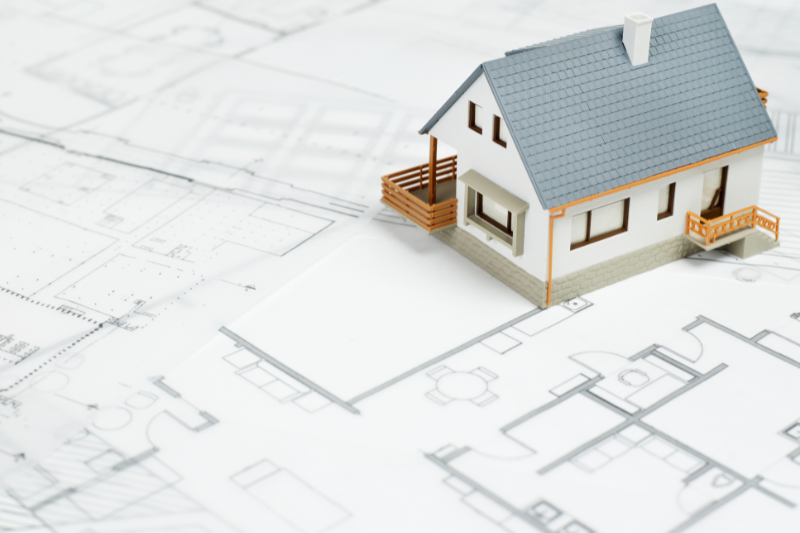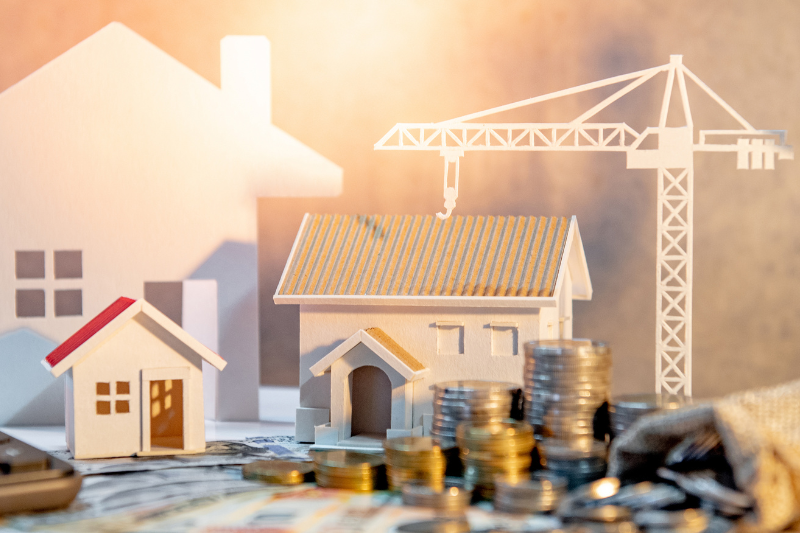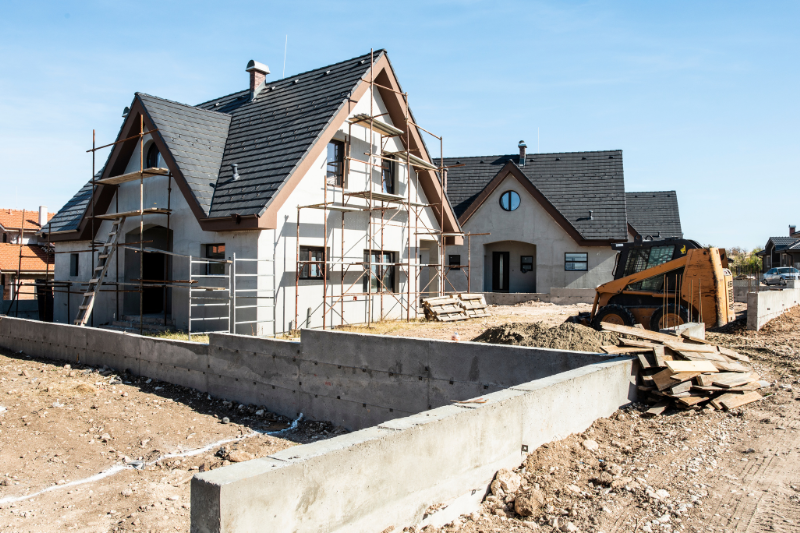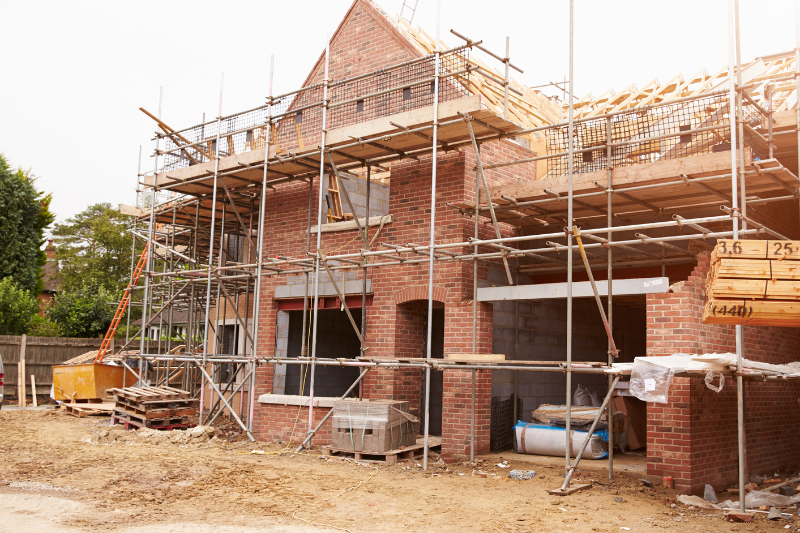So you're thinking about building a new property. Maybe you've always wanted to, or perhaps…
Mastering Real Estate Development Loans: Your Guide to Project Financing
Real estate development loans are essential for property development. These loans provide the capital needed to buy land, construct buildings, and complete projects. Understanding these loans is crucial for success, whether you’re an experienced developer or a first-time investor.
This guide explores the different types of real estate development loans, their pros and cons, and what lenders look for in an application. We’ll also discuss the development process, from feasibility studies to project completion, and offer tips on budgeting and risk management. This guide will equip you with the knowledge to secure financing for your next real estate development project.
Understanding the Real Estate Development Process
Before diving into real estate development loans, it’s important to understand the overall development process. This knowledge helps you plan for the financing needs at each stage.
The real estate development process usually involves four main stages: site selection and land acquisition, pre-development, development and construction, and post-construction/closeout or operation and management.
Site Selection and Land Acquisition
The first step in any real estate development project is acquiring land in the right location. This involves conducting market research to identify potential areas, evaluating zoning regulations and land use restrictions, negotiating purchase terms with landowners, and performing due diligence. Due diligence includes environmental assessments and title searches.
Financing at this stage often involves land acquisition loans. These loans can be difficult to obtain due to the inherent risks involved in raw land purchases.
Pre-development
The pre-development stage is often the riskiest and potentially the longest part of the process. It involves conducting detailed market analysis, obtaining necessary permits and approvals, creating architectural and engineering plans, developing a project budget and timeline, and securing financing for the entire project.
Real estate development loans during this stage might be predevelopment or bridge loans, covering costs until more permanent financing is secured. These loans bridge the gap and keep the project moving forward.
Development and Construction
Construction begins once all approvals are in place and financing is secured. This stage includes site preparation, infrastructure development, vertical construction of buildings, regular inspections and quality control, and marketing to potential tenants or buyers.
Construction loans are the primary financing source during this phase, providing funds in stages as the project progresses. These loans are specifically designed to cover the costs associated with the physical construction of the project.
Post-construction/Closeout or Operation and Management
The final stage involves completing remaining construction details, obtaining final inspections and certificates of occupancy, marketing and leasing (for commercial properties) or selling (for residential developments), and transitioning to long-term property management, if applicable.
Developers may seek permanent financing to replace construction loans at this point. This is particularly common for income-producing properties, providing long-term financing solutions and potentially lower interest rates.
Types of Real Estate Development Loans
Now that we understand the development process, let’s explore the types of real estate development loans available to finance each stage.
Traditional Bank Loans
Traditional bank loans are often the first option developers consider. These loans are typically offered by established financial institutions like credit unions, banks, and mortgage brokers.
Pros:
- Lower interest rates compared to other financing options
- Longer repayment terms, beneficial for long-term projects
- Stability and reliability of working with well-known institutions
Cons:
- Stringent requirements, potentially difficult for new investors or those with credit history issues
- Lengthy application and approval processes
- Substantial down payment requirements, usually at least 20% of the property’s purchase price
Traditional bank loans offer attractive terms, but may not be suitable for all developers or projects due to their strict requirements and longer processing times. Consider your financial situation and project timeline carefully when evaluating this option.
Private Money Loans
Private money loans, also known as hard money loans, are provided by individuals or companies rather than traditional financial institutions.
Pros:
- Quicker loan approval, allowing developers to act on time-sensitive deals
- More flexible terms and customized agreements
- Focus on the property’s potential rather than the borrower’s credit history
Cons:
- Higher interest rates compared to traditional bank loans
- Shorter repayment terms
- Potentially higher fees
Private money loans offer flexibility, but typically come with higher costs. Carefully evaluate these costs against the benefits when considering this option.
Government-Backed Loans
Government-backed loans, such as Small Business Administration (SBA) loans, can be an attractive option for some developers, particularly those developing owner-occupied properties.
Pros:
- Lower down payment requirements
- Competitive interest rates
- Longer repayment terms
Cons:
- Strict eligibility requirements
- Lengthy application and approval processes
- Limitations on loan amounts and property types
Government-backed loans offer favorable terms, but the eligibility requirements and application process should be carefully considered. Ensure you meet the specific criteria and are prepared for potential delays.
Mezzanine Financing
Mezzanine financing is a hybrid of debt and equity financing. It is often used to bridge the gap between senior debt and equity in a project’s capital stack.
Pros:
- Allows developers to secure additional funding beyond what traditional lenders offer
- No collateral required (typically)
- Interest is often tax-deductible
Cons:
- Higher interest rates compared to senior debt
- Potential loss of control if the loan converts to equity
- Complex structures that may be challenging to understand
Mezzanine financing provides an alternative for developers seeking additional capital beyond traditional financing options. Carefully consider the terms and potential risks, especially regarding equity conversion and complex structures.
Key Factors Lenders Consider
When applying for real estate development loans, understanding what lenders look for is crucial. These factors help them assess the project’s viability and your ability to repay the loan. Here are some key factors lenders evaluate:
- Project Feasibility: Lenders want to see a detailed feasibility study. This study should include cost estimates, market analysis, financial projections, and risk assessment. It helps demonstrate the project’s potential for success.
- Developer Experience: Your track record in completing similar projects is crucial. Lenders will assess your ability to manage potential issues during the development process. A proven track record can significantly improve your chances of loan approval.
- Financial Strength: Lenders will review your financial statements, credit history, and liquidity. This helps them ensure you can manage the project and handle any unexpected costs. Maintaining strong financial health is vital for loan approval.
- Market Conditions: The overall real estate market and specific local conditions are significant factors in lending decisions. Lenders consider the supply and demand dynamics, property values, and economic indicators.
- Exit Strategy: Lenders need to see a clear plan for loan repayment. This could be through the sale of the property or refinancing. Having a well-defined exit strategy demonstrates your understanding of the market and your commitment to fulfilling your financial obligations.
- Collateral: The value and quality of the collateral, usually the property itself, are critical in securing a loan. The collateral acts as security for the lender in case of default.
Creating a Robust Development Budget
A well-structured and comprehensive budget is essential for securing real estate development loans and managing your project effectively. It helps track expenses, identify potential cost overruns, and demonstrate your understanding of the financial requirements.
Here’s a table outlining key components to include in your development budget:
| Budget Category | Examples of Costs |
|---|---|
| Land Acquisition | Purchase price, closing costs, due diligence expenses |
| Site Preparation | Demolition, grading, environmental remediation |
| Hard Costs | Construction materials, labor, equipment rental |
| Soft Costs | Architectural and engineering fees, permits, legal fees, insurance |
| Financing Costs | Interest, loan fees, appraisals |
| Marketing and Leasing/Sales | Advertising, broker commissions, model units |
| Contingency | Typically 10-20% of total project cost to cover unexpected expenses or changes in the project scope. |
Allocate a contingency fund within your budget to cover unexpected expenses or changes in the project scope. A contingency of 10-20% of the total project cost is a good starting point.
Managing Risks in Real Estate Development
Real estate development carries inherent risks, and lenders need to see a solid risk management strategy. This demonstrates your understanding of potential challenges and your preparedness to mitigate them.
Here are some key risks to consider and mitigate:
- Market Risk: The potential for units not to sell at projected prices by the project’s end. Conduct thorough market research, analyze comparable properties, and adjust pricing strategies as needed.
- Construction Risk: Delays, cost overruns, and quality issues can impact a project’s success. Choose reputable contractors, implement rigorous quality control measures, and have contingency plans in place for unexpected delays.
- Regulatory Risk: Changes in legislation or zoning could impact the ability to complete or sell the project. Stay informed about local regulations, obtain necessary permits early on, and build flexibility into your plans.
- Environmental Risk: Unforeseen environmental issues can lead to costly remediation and project delays. Conduct environmental assessments early on and factor in potential remediation costs.
- Financial Risk: Interest rate fluctuations, lending criteria changes, or economic downturns can affect project financing. Secure favorable interest rates, explore multiple financing options, and maintain a financial cushion.
To manage these risks effectively:
- Conduct thorough due diligence before committing to a project.
- Implement a robust cost tracking and reporting system.
- Establish strong relationships with reliable vendors and contractors.
- Implement a change management process to assess the impact of any scope changes on the budget.
- Provide regular updates to stakeholders, including investors, lenders, and partners.
6 Tips For Getting Property Development Loans
Securing a property development loan, especially for new real estate investors and property flippers, can feel like navigating a maze. Lenders view development projects as high-risk, so a strong loan application is crucial. Whether you’re a seasoned developer or just starting, these tips can maximize your chances of approval and help turn your real estate dreams into reality.
-
Showcase a Strong Track Record
Lenders prioritize experience. Highlight successful past projects, even small-scale ones, to demonstrate your ability to manage projects effectively and generate returns. If you’re new to development, consider partnering with an experienced developer to bolster your application.
-
Craft a Comprehensive and Compelling Plan
A detailed business plan is non-negotiable. Outline your project meticulously, including market analysis, financial projections, and a clear exit strategy. A well-structured plan instills confidence in lenders about your project’s viability.
-
Provide Thorough Due Diligence
Don’t skimp on research. Lenders are impressed by borrowers who demonstrate a deep understanding of the local market. Present a comprehensive analysis of comparable properties, construction costs, and potential challenges. Addressing potential hurdles upfront shows foresight and mitigates risk in the lender’s eyes.
Conclusion
Real estate development loans are vital in bringing property projects to life, providing the capital to turn plans into buildings. However, securing financing in real estate development requires planning, research, and a good understanding of the risks.
Understanding loan types, lender expectations, and creating a comprehensive development budget can help you secure the necessary financing. Remember that successful real estate development relies on both financial knowledge and expertise in design and construction.
When starting your next development project, research financing options, build relationships with lenders, and create a solid risk management plan. With the right approach to real estate development loans, you can turn your property development goals into a reality.
FAQs about real estate development loans
What is a development loan in real estate?
A development loan in real estate finances property development project stages. These loans cover land acquisition, site preparation, construction, and initial operational expenses. They are usually short-term and repaid once the project is completed and sold or refinanced with a long-term mortgage.
How do real estate developers raise money?
Real estate developers use various methods to raise capital, including traditional bank loans, private equity investments, crowdfunding platforms, government grants or subsidies, joint ventures with other developers or investors, and sometimes pre-selling units in the development. The choice depends on the project’s size, the developer’s experience, financial strength, and current market conditions.
How much can you borrow with development finance?
The borrowing capacity with development finance depends on several factors, including the total project cost, completed development value, your developer experience, and lender policies. Typically, lenders finance between 50% to 80% of the project costs. They usually offer up to 50-70% of the land value for land purchases, and for construction costs, they might fund up to 100% of the building costs.
Can you use an SBA loan for real estate?
Yes, you can use specific SBA loans for real estate, especially the SBA 504 loan program designed for fixed asset purchases, including real estate. These loans help buy land and buildings, construct new facilities, or renovate existing ones. However, SBA loans are primarily for owner-occupied properties, meaning the business must occupy at least 51% of the property.
